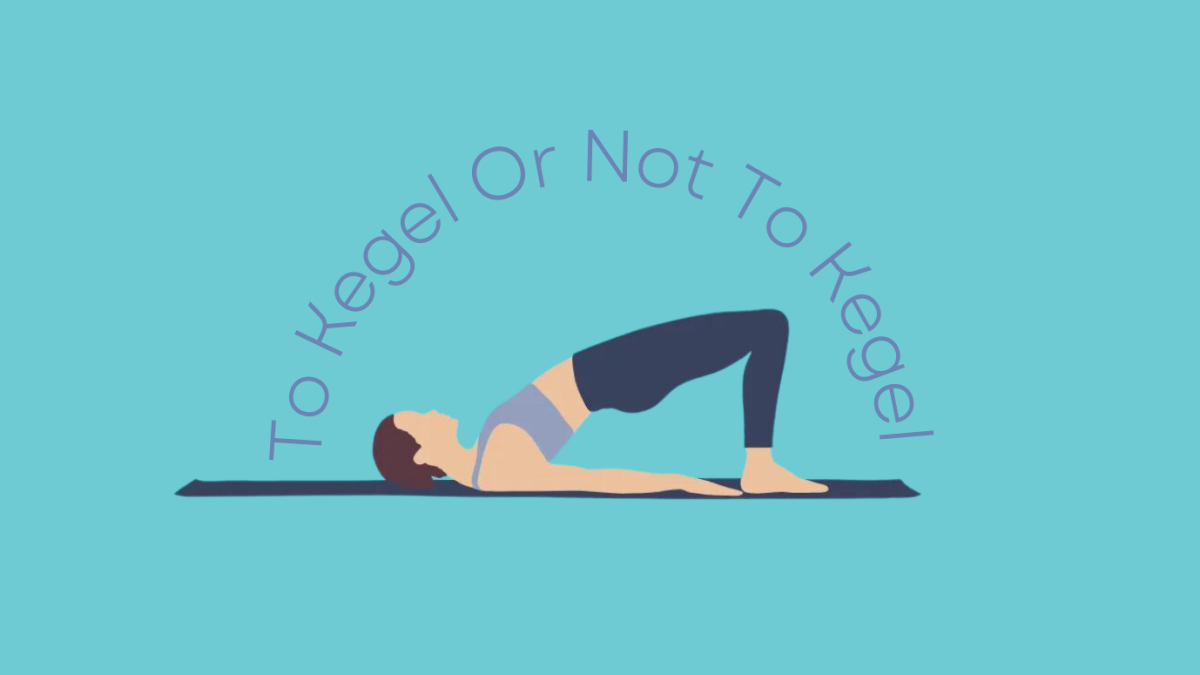
To Kegel or Not to Kegel: A Guide for Women with Pelvic Organ Prolapse
Pelvic organ prolapse (POP) is a common condition that can cause discomfort and pain for many women. It occurs when the muscles that support the pelvic organs weaken or stretch, causing the organs to sag into the vaginal canal. One way to manage POP is through Kegel exercises, but the effectiveness of Kegels can vary. In this article, we’ll explore whether or not to Kegel, which types of prolapse can benefit from Kegels, other exercises that can help manage POP, and more.
To Kegel or not to Kegel? That is the question. Kegels are pelvic floor exercises that target the muscles that support the bladder, uterus, and rectum. These exercises are often recommended for preventing and treating POP. However, studies have shown that Kegels may not be effective for all types of prolapse. So, before you start doing Kegels, it’s important to determine the type of prolapse you have.
Different Types of Prolapse and Kegel Effectiveness:
If you have a prolapse of the bladder (cystocele) or uterus (uterine prolapse), Kegels can be very effective for managing POP. The goal of Kegels is to strengthen the pelvic floor muscles that support the bladder and uterus. These muscles act like a hammock to keep the organs in place. When the muscles weaken, the organs can sag, causing POP. By doing Kegels, you can strengthen these muscles and improve the support of the organs.
On the other hand, if you have a prolapse of the rectum (rectocele) or of the small bowel (enterocele), Kegels may not be as effective. Why? Because the Kegel exercises involve contracting the pelvic floor muscles, which can apply pressure to the rectum. This pressure can cause the rectum to bulge further down into the vaginal canal, worsening the POP. However, every body is unique and you should discuss your exercise regime with your healthcare provider and physiotherapist to get a personalized plan.
Other Exercises for Managing Pelvic Organ Prolapse:
If Kegels are not effective for your type of prolapse, there are other exercises you can do to help manage POP. These include:
1) Squats – Squats, when performed correctly, are an excellent exercise to manage Pelvic Organ Prolapse (POP). They engage and strengthen a wide range of muscles, including the gluteal muscles, abdominals, and most importantly, the pelvic floor muscles. It’s important to remember, however, that correct form is key to successful squats.
2) Bridge – The bridge exercise is another effective way to strengthen the pelvic floor. It also works your glutes and hamstrings. Lie on your back with your knees bent and feet flat on the floor, hip-width apart. Press down through your ankles and raise your buttocks off the floor while you tighten your abdominal muscles. Keep your knees aligned with your ankles and aim for a straight line from your shoulders to your knees, remembering not to arch your back; your body should be in a straight line from your shoulders to your knees. Hold the position for a few seconds and then slowly lower yourself back onto the floor.
3) Lunges – Lunges are a dynamic exercise that powerfully engages various muscle groups, including the pelvic floor muscles, glutes, and abdominal muscles. By performing lunges, you’re not only improving your lower body strength, but you’re also stimulating the muscles that provide support to your pelvic organs, thereby alleviating the symptoms of POP. This exercise also improves stability and balance, which are key to maintaining proper posture and alignment, further aiding in managing POP symptoms.
4) Abdominal exercises – Abdominal exercises, on the other hand, are essential for enhancing core strength, which includes the pelvic floor muscles. A strong core ensures better stability and support for the pelvic organs, reducing the strain on the pelvic floor muscles. This could potentially decrease the risk of worsening POP. Exercises such as planks or abdominal crunches can specifically engage these muscles. However, it’s crucial to perform these exercises with correct form and under professional guidance to avoid any adverse effects.
5) Deep breathing – Another helpful exercise for managing pelvic organ prolapse is deep breathing. Deep breathing, or diaphragmatic breathing, can help strengthen the pelvic floor by creating pressure that supports the muscles and tissues of the pelvic floor. To perform this exercise, lie on your back with your knees bent and your feet flat on the ground. Place your hands on your belly and take a deep breath in through your nose, expanding your belly as you inhale. Exhale slowly through your mouth, pulling your belly button towards your spine. Repeat this exercise for several minutes a day.
These exercises should be performed under the guidance of a trained professional to ensure safety and effectiveness. Remember, while these exercises can help manage POP symptoms, they should be part of a broader, comprehensive treatment plan, which should be discussed with a healthcare professional.
Pelvic organ prolapse can be a distressing and uncomfortable condition for women. However, there are exercises that can help manage POP, including Kegels, if they are right for your type of prolapse. Knowing the type of prolapse you have is crucial in determining which exercises are effective. Other exercises like squats, bridges, lunges, and abdominal exercises can also be very beneficial for women with POP. It’s important to listen to your body and talk to your healthcare provider before starting any exercise regimen. Remember, taking control of your health is a sign of strength and independence. You got this!
To Kegel or Not to Kegel: A Guide for Women with Pelvic Organ Prolapse
Pelvic organ prolapse (POP) is a common condition that can cause discomfort and pain for many women. It occurs when the muscles that support the pelvic organs weaken or stretch, causing the organs to sag into the vaginal canal. One way to manage POP is through Kegel exercises, but the effectiveness of Kegels can vary. In this article, we’ll explore whether or not to Kegel, which types of prolapse can benefit from Kegels, other exercises that can help manage POP, and more.
To Kegel or not to Kegel? That is the question. Kegels are pelvic floor exercises that target the muscles that support the bladder, uterus, and rectum. These exercises are often recommended for preventing and treating POP. However, studies have shown that Kegels may not be effective for all types of prolapse. So, before you start doing Kegels, it’s important to determine the type of prolapse you have.
Different Types of Prolapse and Kegel Effectiveness:
If you have a prolapse of the bladder (cystocele) or uterus (uterine prolapse), Kegels can be very effective for managing POP. The goal of Kegels is to strengthen the pelvic floor muscles that support the bladder and uterus. These muscles act like a hammock to keep the organs in place. When the muscles weaken, the organs can sag, causing POP. By doing Kegels, you can strengthen these muscles and improve the support of the organs.
On the other hand, if you have a prolapse of the rectum (rectocele) or of the small bowel (enterocele), Kegels may not be as effective. Why? Because the Kegel exercises involve contracting the pelvic floor muscles, which can apply pressure to the rectum. This pressure can cause the rectum to bulge further down into the vaginal canal, worsening the POP. However, every body is unique and you should discuss your exercise regime with your healthcare provider and physiotherapist to get a personalized plan.
Other Exercises for Managing Pelvic Organ Prolapse:
If Kegels are not effective for your type of prolapse, there are other exercises you can do to help manage POP. These include:
1) Squats – Squats, when performed correctly, are an excellent exercise to manage Pelvic Organ Prolapse (POP). They engage and strengthen a wide range of muscles, including the gluteal muscles, abdominals, and most importantly, the pelvic floor muscles. It’s important to remember, however, that correct form is key to successful squats.
2) Bridge – The bridge exercise is another effective way to strengthen the pelvic floor. It also works your glutes and hamstrings. Lie on your back with your knees bent and feet flat on the floor, hip-width apart. Press down through your ankles and raise your buttocks off the floor while you tighten your abdominal muscles. Keep your knees aligned with your ankles and aim for a straight line from your shoulders to your knees, remembering not to arch your back; your body should be in a straight line from your shoulders to your knees. Hold the position for a few seconds and then slowly lower yourself back onto the floor.
3) Lunges – Lunges are a dynamic exercise that powerfully engages various muscle groups, including the pelvic floor muscles, glutes, and abdominal muscles. By performing lunges, you’re not only improving your lower body strength, but you’re also stimulating the muscles that provide support to your pelvic organs, thereby alleviating the symptoms of POP. This exercise also improves stability and balance, which are key to maintaining proper posture and alignment, further aiding in managing POP symptoms.
4) Abdominal exercises – Abdominal exercises, on the other hand, are essential for enhancing core strength, which includes the pelvic floor muscles. A strong core ensures better stability and support for the pelvic organs, reducing the strain on the pelvic floor muscles. This could potentially decrease the risk of worsening POP. Exercises such as planks or abdominal crunches can specifically engage these muscles. However, it’s crucial to perform these exercises with correct form and under professional guidance to avoid any adverse effects.
5) Deep breathing – Another helpful exercise for managing pelvic organ prolapse is deep breathing. Deep breathing, or diaphragmatic breathing, can help strengthen the pelvic floor by creating pressure that supports the muscles and tissues of the pelvic floor. To perform this exercise, lie on your back with your knees bent and your feet flat on the ground. Place your hands on your belly and take a deep breath in through your nose, expanding your belly as you inhale. Exhale slowly through your mouth, pulling your belly button towards your spine. Repeat this exercise for several minutes a day.
These exercises should be performed under the guidance of a trained professional to ensure safety and effectiveness. Remember, while these exercises can help manage POP symptoms, they should be part of a broader, comprehensive treatment plan, which should be discussed with a healthcare professional.
Pelvic organ prolapse can be a distressing and uncomfortable condition for women. However, there are exercises that can help manage POP, including Kegels, if they are right for your type of prolapse. Knowing the type of prolapse you have is crucial in determining which exercises are effective. Other exercises like squats, bridges, lunges, and abdominal exercises can also be very beneficial for women with POP. It’s important to listen to your body and talk to your healthcare provider before starting any exercise regimen. Remember, taking control of your health is a sign of strength and independence. You got this!





